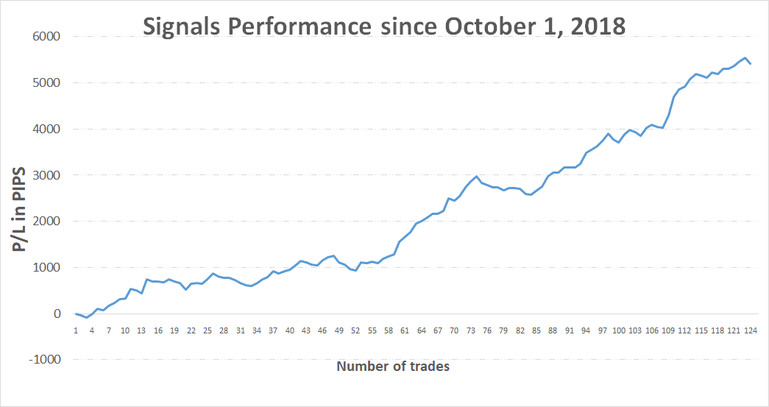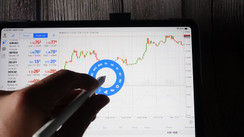This trade idea was first sent to subscribers of the Free Profitable Forex Newsletter on June 3 2022.
In today's special edition of our newsletter, we discuss the long-term outlook for the euro, the lose-lose situation the ECB is in, and why we remain bearish EURUSD for the remainder of 2022.
Why the ECB's Hawkish Shift Can't Reverse the EURUSD Downtrend
The euro closed higher in May and recovered some of the steep losses from April. While the retracement was mainly driven by a broad correction in the dollar, it was also helped by a couple of upside surprises in Eurozone CPI inflation reports. This spurred a further shift in ECB rate hike expectations, as with inflation running above 8% in Europe, it makes no sense to continue doing QE and keep interest rates negative.
The markets have adjusted and are now pricing in as many as 3-4 ECB rate hikes by December! Some ECB Governors have even started talking about 50 bp hikes for the July meeting. This is a big shift from a central bank that was firmly one of the most dovish in tandem with the Bank of Japan.
Yet, all of this ECB hawkishness was only able to produce a mediocre retracement in EURUSD.
Why is that?
First and foremost, inflationary pressures and (more importantly) growth prospects in the Eurozone remain much weaker than in the United States. This is the primary reason why the ECB simply won't be able to match the hawkishness of the Fed. A recession in the Eurozone later this year is a decent probability, and the ECB now thinking about aggressive rate hikes can only make matters worse.
However, let's say that the ECB actually does start raising rates and tightening policy. This brings us to the 2nd point and why the current situation is probably a lose-lose scenario for the EUR currency.
Many may think that if the ECB gets aggressively hawkish, it will be bullish for the euro (some speculation circulating around even suggests EURUSD has bottomed for the year). In reality, however, that is a big question mark. This has to do with the highly-indebted state of some euro area countries (i.e., Greece, Italy, Spain, Portugal). Raising interest rates on highly indebted countries reduces their ability to pay back the debt. Such issues created the European debt crisis in 2012, and back then, EURUSD was making fresh lows on a daily basis.
Thus, If the ECB attempts to hike rates aggressively, there is a decent chance that some serious problems will start to appear, particularly with Italian debt being at risk. We can't know if and when that would happen, but the more hawkish the ECB gets, the more likely it is for such problems to appear. So, if some EU countries start experiencing debt problems, a hawkish ECB can still end up being bearish for the EUR currency.
Monthly technicals remain bearish as long as EURUSD is below 1.10
The monthly chart perhaps confirms this longer-term view. It shows that the bearish breakout sticks and indicates that 1.00 (parity) is still on the cards for later this year. Based on the fundamentals discussed above, it appears more likely that EURUSD will trade closer to 1.00 than 1.10 by December this year.
The technicals on the monthly timeframe show us that the 1.10 zone is the key resistance zone that keeps the bearish narrative intact (see chart above). Basically, as long as EURUSD is below 1.10, the long-term technicals will stay bearish. This means that the momentum will stay with the bears and can eventually push the pair to reach the 1.00 zone.
EUR Outlook Scenarios: Mostly bearish with a tiny chance for a recovery
We can summarize the EURUSD scenarios for the remainder of this year as follows:
- If the ECB holds rates low, despite high inflation, that will be bearish for EUR via the yield differential channel (other countries will have higher interest rates).
- If, on the other hand, the ECB decides to hike rates aggressively to fight inflation, then it risks creating turmoil in European bond markets, especially in the highly indebted countries of the South. This would also be a bearish scenario for the EUR and could even be the worse of the two scenarios.
The only potential scenario in which EURUSD could see a sustained recovery could be if the Eurozone avoids a recession and inflation starts to rapidly fall on its own (most banks expect this). But, as you may imagine, this scenario also implies that we will get some improvement in the Russia-Ukraine war and the European energy crisis (with gas and electricity). Unfortunately, such an optimistic outcome for Europe still looks like a fairly improbable scenario (at least for the moment).
Note: Our bearish EURUSD view for the longer term is currently against the consensus. Most major banks still forecast EURUSD to recover toward 1.10 by the end of the year.
Trade signals from the past weeks
- May 16, Long EURGBP from 0.8490, in progress (trade idea sent May 11, 2022)
- June 03, Short GBPUSD from 1.2540, open in progress
TOTAL P/L in the past week: 0 pips
TOTAL: +5410 pips profit since October 1, 2018


![A Lose-Lose Scenario for EUR [Newsletter SPECIAL, June 03]](https://cdn.investworld.net/insecure/w:835/h:407/rt:fit/g:ce:0:0/el:1/f:jpg/c:0:0/q:90/czM6Ly9zZXJ2aWNlcy0tODM1OS0taW1hZ2VzLzhkYzc0MDUxYTU3OWFmOWMwNjk0OGEwODcwMDYwYjI1YzY2ZDFmMTcucG5n.jpg)



